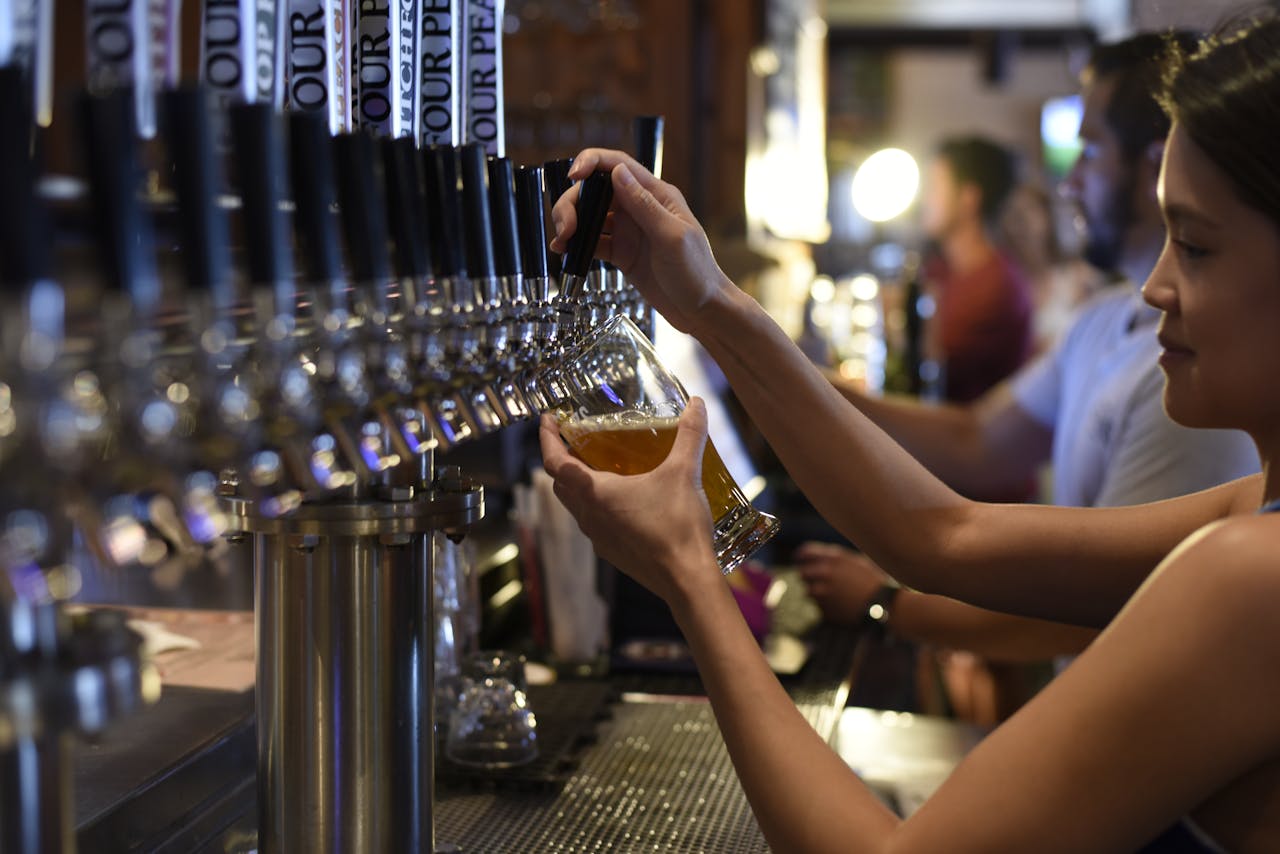Rotating beer taps at your craft beer bar is an art as much as it is a science. It requires thoughtful consideration, planning, and a deep understanding of your customers’ preferences. This rotation not only prevents wastage of beer, but also keeps your craft beer selection exciting and varied for regular patrons. As it is an essential part of running a successful craft beer bar, we will delve into best practices for rotating your beer taps, discussing everything from understanding your customer base to proper keg storage.
Knowing Your Customers’ Preferences
Before you can devise a successful rotation strategy for your draft beers, it’s important to understand your customer base and what they prefer. Differentiating between the tastes of craft beer connoisseurs and casual beer drinkers is crucial. Understanding your customers’ preferences will help you make informed decisions on what beers to serve and when.
Topic to read : How can you leverage social media to promote a new restaurant opening?
Undertake regular surveys or informal chats with your patrons about their favourite beers. Keep track of which beers sell quickly and which ones linger in the kegs. This information will serve as a guide as you plan your tap rotation and make orders from breweries. Additionally, you can introduce new and exciting craft beers that align with your customers’ taste profiles to keep them engaged and coming back for more.
Selecting the Right Beers
Once you understand your customers’ preferences, the next step is selecting the right beers for your tap rotation. Each tap should have a unique brew that stands out and adds value to your beer menu. Variety is key in a craft beer bar. Beers should vary in style, flavour, and brewery of origin. This gives customers a wide range of choices and an opportunity to explore diverse craft beers.
Also to see : How do you effectively handle customer complaints in a fine dining setting?
Consider having a mix of staple beers that are always on tap, seasonal brews that change according to the time of year, and specialty beers for those adventurous customers. This balance will ensure that there’s always something for everyone. Be sure to partner with reliable breweries that can provide quality kegs consistently.
Implementing a Rotation System
Implementing a rotation system is vital in managing your draft beers effectively. How often you rotate your beers will greatly depend on your customer flow and consumption patterns. For some bars, a weekly rotation works perfectly, while others might need to rotate their taps every few days.
Always keep track of the age of each keg in your system. As a rule of thumb, once a keg has been tapped, it should be served within a certain timeframe to maintain freshness, typically between 20 to 30 days. Past this time, the quality of the beer can deteriorate, affecting the taste and overall customer experience.
Proper Keg Storage and Handling
Proper keg storage and handling are crucial to maintain the quality of your beer. Kegs should be stored upright in a cool and dark place, preferably in a temperature-controlled environment. Avoid storing kegs near sources of heat, as this can cause the beer to spoil more quickly.
When tapping a new keg, ensure that the tap and lines are clean. Dirty taps or lines can affect the taste of the beer and lead to customer dissatisfaction. Regular cleaning of your tap system is paramount.
Training Staff on Pour Techniques and Glassware
Finally, while it may not seem directly related to rotating taps, how your staff pours the beer and the type of glassware they use can have a significant impact on the customer experience. Train your staff to pour beer correctly, with the right amount of head. This will ensure that each customer gets the perfect pint every time.
As for glassware, each beer style has a specific type of glass that enhances its flavor and presentation. Staff should be knowledgeable about this and always serve beer in the correct glassware. This attention to detail will not only improve the beer drinking experience for your customers but also demonstrate your bar’s commitment to craft beers.
By following these best practices for rotating beer taps, your craft beer bar can provide a consistently high-quality and varied selection of beers. This will keep your customers satisfied, intrigued, and coming back for more.
Ensuring Quality with Routine Maintenance
The quality of your craft beer is heavily dependent on the condition of your draft system. Whether you have a jockey box or a traditional draft system, routine maintenance is essential. As with anything that handles food and beverages, cleanliness is paramount.
Your draft system, including the beer lines and the beer faucet, are a critical part of your operation. They require regular cleaning to ensure that the beer dispensed is of the highest quality. This also helps to prevent draught beer from becoming foamy beer, which can lead to wastage and customer dissatisfaction.
Beer lines, in particular, can harbor bacteria and yeast if not cleaned regularly. This can affect the taste of the beer and can also make customers sick. Cleaning should be done at least every two weeks or whenever you are changing the beer keg.
If you are using a jockey box, it is recommended to clean it after each use. Jockey boxes are typically made of stainless steel, making them easy to clean and resistant to corrosion.
Moreover, the tap wall and the faucet beer should be cleaned thoroughly to prevent any build-up of yeast or mold. Using a commercial-grade cleaner should be enough to get them sparkling clean.
Also, keep an eye on the condition of your equipment. Look for any signs of wear and tear, and replace parts as needed. Investing in high-quality equipment will ensure that your beer systems last longer and continue to dispense quality beer.
Serving Beer: A Mix of Science and Art
The way you serve beer can greatly influence the overall customer experience. There are several factors to consider, including the temperature of the beer, the pour technique, and the type of glass used.
Beer should be served at the right temperature. While specific temperatures may vary based on beer styles, a general rule of thumb is to serve ales between 40°F and 55°F and lagers between 38°F and 45°F.
The pour technique is another crucial aspect. A proper pour should produce about 1 to 1.5 inches of head, enhancing beer flavors and aromas while preventing excess carbonation. Training your staff to pour beer correctly is vital in providing an excellent customer experience.
Finally, the right glassware is essential in presenting and serving beer. Different beer styles have their own designated glassware. For instance, wheat beers are often served in weizen glasses, while pilsners have their own tall, slender glasses. Staff should be knowledgeable about this to serve beer in the correct glassware.
If you have a beer bar, consider hosting beer tasting events. These events can be a fun way to introduce customers to different beer styles and flavors. They can also serve as an educational experience for both the customers and staff.
Conclusion
Running a thriving craft beer bar involves juggling many elements, from understanding your customers’ preferences to selecting the right beers and maintaining your draft systems. Whether you have a tap wall or use jockey boxes, it’s essential to keep your equipment in good shape and your beer lines clean. Balancing the rotation of your beers, serving beer at the right temperature, and using the appropriate glassware are also vital. By adhering to these best practices for rotating beer taps, your bar will provide an exciting and varied selection of beers that keep patrons coming back for more.






